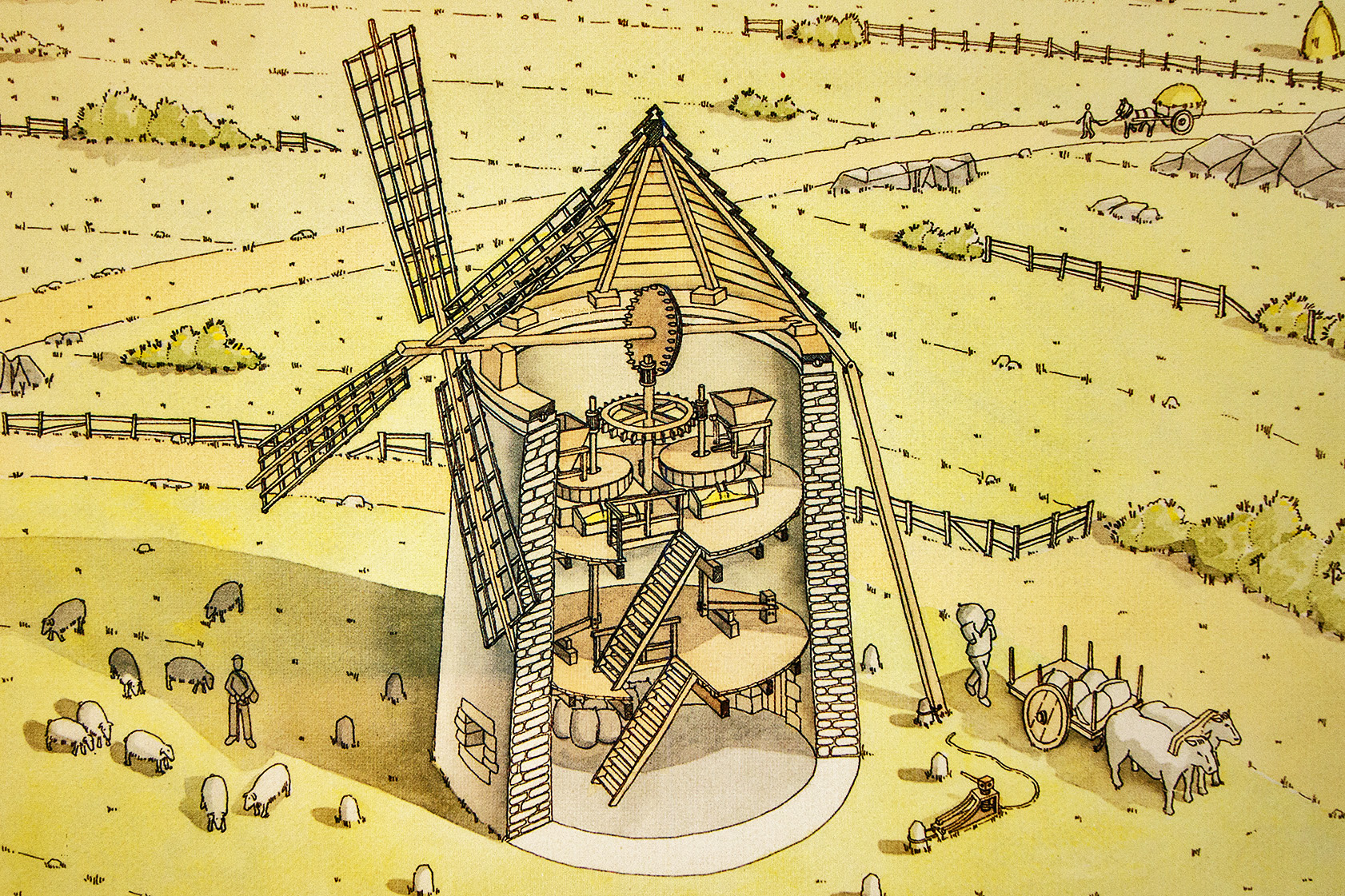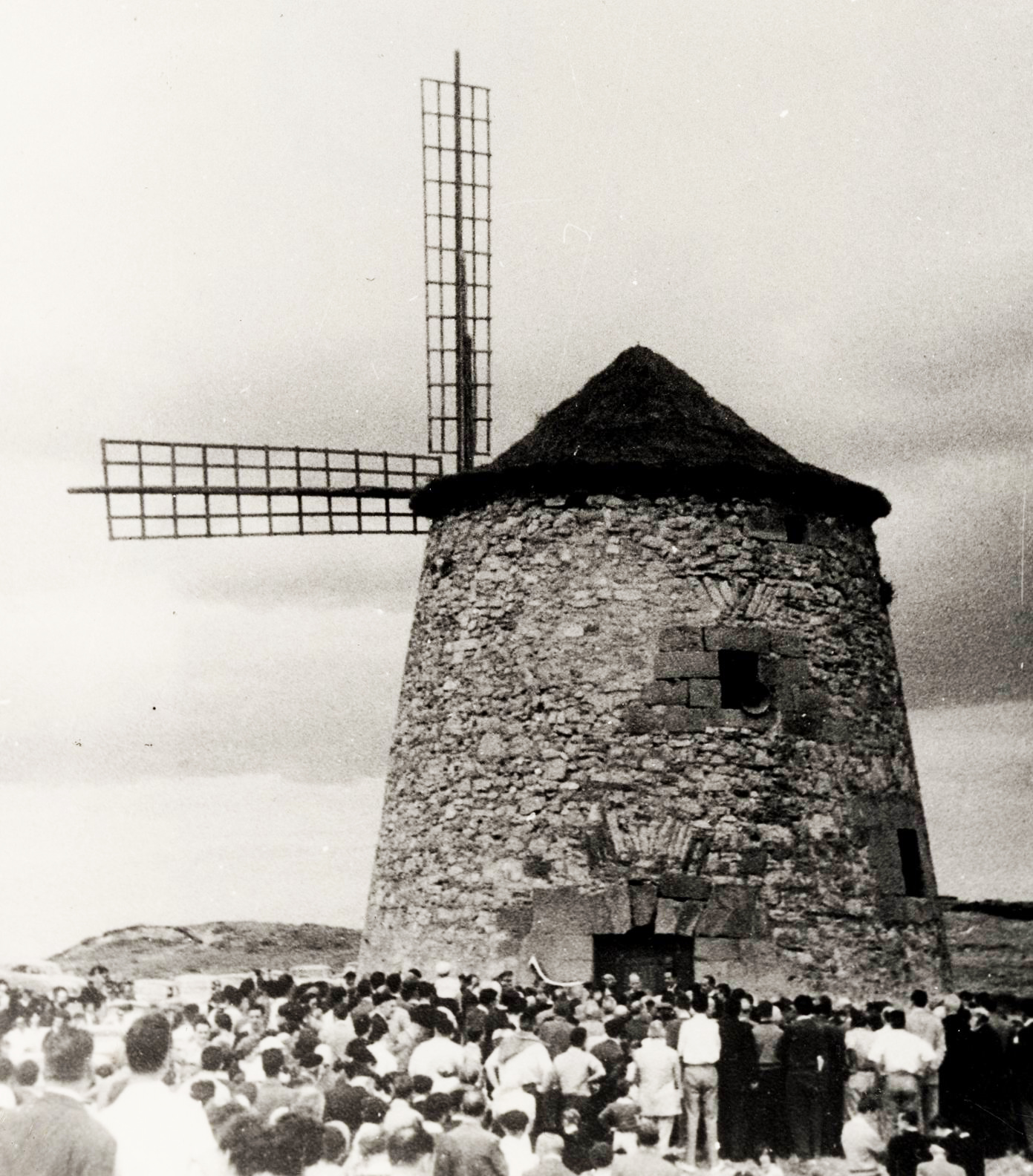Basque ethnography at a glance

Cross section of a typical windmill in Bizkaia. Drawing by Eduardo Cordero and Ramón Higuera.
The earliest known windmills constructed in Bizkaia date from the 18th century. These wind-powered mills appeared during the decade of the 1720s, coinciding with a long dry spell that hit the entire territory of Bizkaia.
Windmills were short-lived, however, for by the end of the drought they gradually abandoned the grinding of grain. Having fallen out of use, their machinery lost to the sands of time, the majority of them ended up in ruins and disappeared. Only a few were refurbished and converted into homes, barns, or in the case of Aixerrota in Getxo, an art gallery.

Aixerrota Windmill in Getxo (Bizkaia). Courtesy of Getxo Council.
The architecture of these windmills followed the typology of the horizontal-axis tower mill. Of stone construction, the stationary tower was a truncated cone-shaped building with carved openings in the wall masonry. The architectural body of the mill was crowned with ashlar stones anchored by lead cramps to prevent displacement. Upon it, the wood-panelled roof, or cap, was mounted on a holm-oak track and could be turned into the wind by means of wheels. Four blades were carried on the horizontal windshaft and heavy nankeen sailcloth spread over them. A rudder attached to the tail pole extending from the rear of the mill downwards served to rotate the cap so that the blades faced the prevailing wind direction.
Inside the mill a vertical wheel with teeth which drove a break on the outside rim was fitted onto the main shaft. The break, a cylinder made of walnut wood, multiplied the number of revolutions of the blades and transformed the rotation of the wheel into horizontal movement. Two smaller brakes driven by a horizontal gearwheel lower down the upright shaft caused the runner stones to turn. The grinding machinery consisted of two pairs of millstones, one for maize and the other for wheat.
Out of the windmills still standing, the most ancient is located in Artxanda (Sondika) and became operational towards the end of 1725. Thereafter, in that same decade, Aixerrota (Getxo), Aixeder (Ispaster) and Azpazar (Abadiño) mills were erected.
We know from written and oral sources of the existence of other windmills on hills and hilltops throughout the territory, among them: Montañán and Treto (Carranza), Arnabarre (Getxo), Lumo (Gernika-Lumo), Arrola (Nabarniz), Garuriz (Plentzia) and Repélega (Portugalete).
Miguel Sabino Díaz – Etniker Bizkaia – Etniker Euskalerria Groups
Translated by Jaione Bilbao – Language Department – Labayru Fundazioa
References for further information: Agriculture, the eighth volume of the Ethnographic Atlas of the Basque Country collection; and also by the author of this entry the work La molinería tradicional en Las Encartaciones [Traditional milling in Las Encartaciones]. Sopuerta, 1998.

